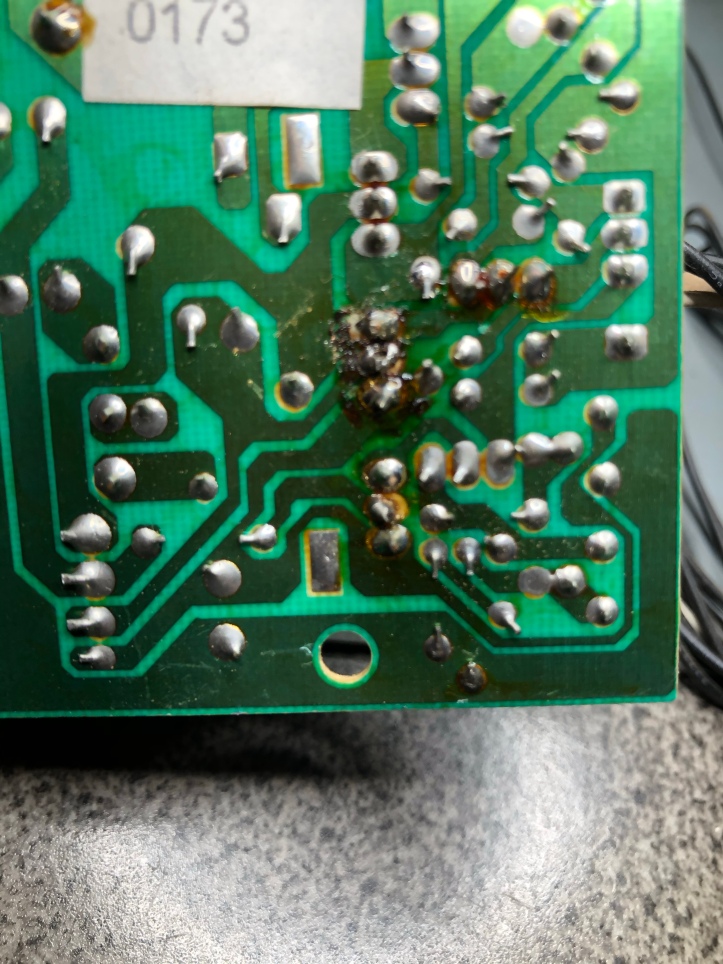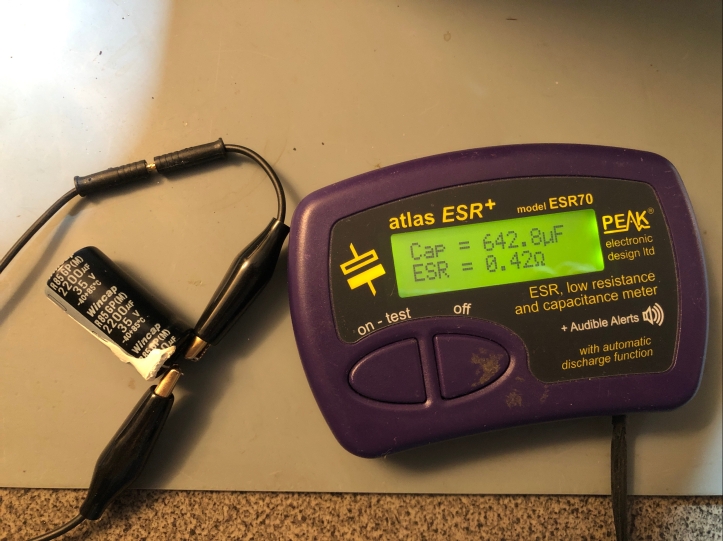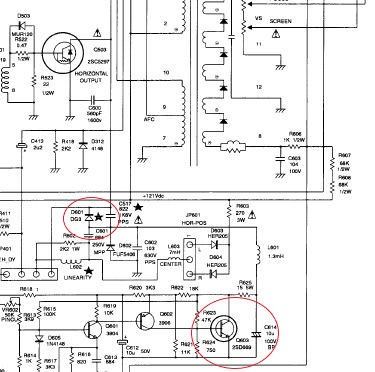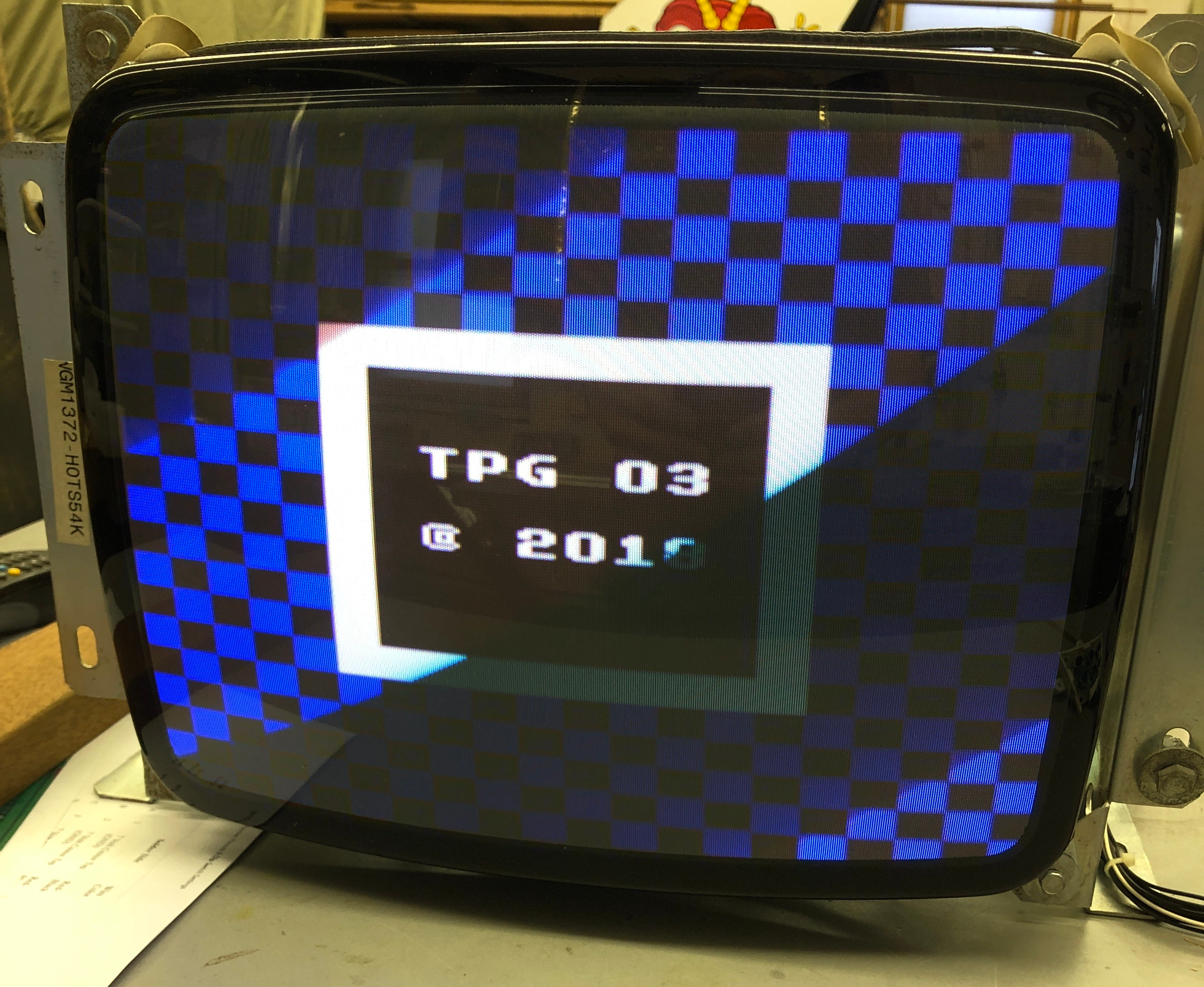Ms. Pac-Man’s dead monitor

The monitor looks brand new. Zero burn. Clean. Really a great looking CRT. A Wells Gardner 13K7203, certainly not original since it was built in 2000. Doesn’t work. First testing showed it is going into high voltage shutdown. I verified this with my HV probe. Shoots way up to 24K+ volts and drains right down to zero in about 5 seconds as it shuts down. Shutdown circuit is doing its job it seems.

It did have some work done to it in the past, so I’ll review what happened at these sites. At minimum I’m cleaning them up.

First visual inspection showed this cap – C403 – was bulging. Supposed to be 2200uf. It’s not. Could this CRT be fixed by just a cap kit? The answer is no. Cap kit (38 caps btw) was a nice to have, but didn’t fix anything. I didn’t really expect it too.. but a guy can dream.

I spent a lot of time researching causes for HV shutdown. Used the flow charts, read articles from KLOV and the Randy From’s Big Blue Book. There are many things to check.. Some said the power supply feeding the transformer that supplies the B+. Others looking for issues in the the shutdown circuit and more in horizontal output circuits. Pretty much start at the front and work my way back.
After poking around for a while testing diodes, transistors and lifting legs of parts that didn’t look right in circuit – I finally found this DG3 diode (D601) Showed dead short in and out of circuit. None of the flow charts really talked about the 600 section of the schematic. Waited a week for the part, popped it in, almost no difference. Fried one while testing and messing with controls.
Since I was getting HV I did not suspect the horizontal output transistor and it didn’t test shorted. However mine was the type that has the internal dampening diode and resistor (I had to read up on these). I checked the resistance across the B<>E junction expecting 50 ohms. I’d get OL in one direction and 2M+ in the other. I didn’t have an exact replacement but had another H.O.T. of this design and did this same test – got 50 ohms.. So maybe my H.O.T. was good but the resistor inside was bad? It was directly in line with the failed diode (D601).
Online I picked up a couple H.O.T.s at this site http://www.arcadecup.com/ They had my flyback on sale for $7.50. (I got one) I did not think the flyback was involved – but it was worth getting at that price.
New H.O.T. showed up and I pulled the flyback to compare the resistance on the windings. Comparing both flyback and the H.O.T. on the bench… and they were identical. That was discouraging.. Put them in, same results.
The B+ adjustment pot was epoxied – I replaced it and could adjust the B+ down to 106v. At this point I could get a full vertical picture and a narrow one horizontally. If I tried adjusting vertical size I could effect the picture like normal, but the horizonal size would not do anything. Turning the B+ to get it to 121V was touchy.. as soon as I hit 121v, the CRT would shut down and the B+ would climb up into the 130’s.

This symptom made me focus more on the horizontal circuitry and I found this transistor. Hunting for B+ and shutdown issues kept me busy not actually looking in the failed HV circuit as much as I should have. This guy (Q603) turned out to be to be the co-conspirator in the HV shutdown along with D601.
This section of the schematic is where my issues were.

Problems always make more sense after you figure them out. I get digital electronics reasonably well. Analog is tough…

I can’t ever get a good picture because of the scan rate – someday I’ll trick the camera to get a good one. The picture is very nice.
Final resolution:
Bad cap C403, diode D601, transistor Q603.
New rule – always test anything that has a heat sink first! No exceptions.
Turning the B+ way down helped in this instance, it provided the clue that got me looking in a different area.
